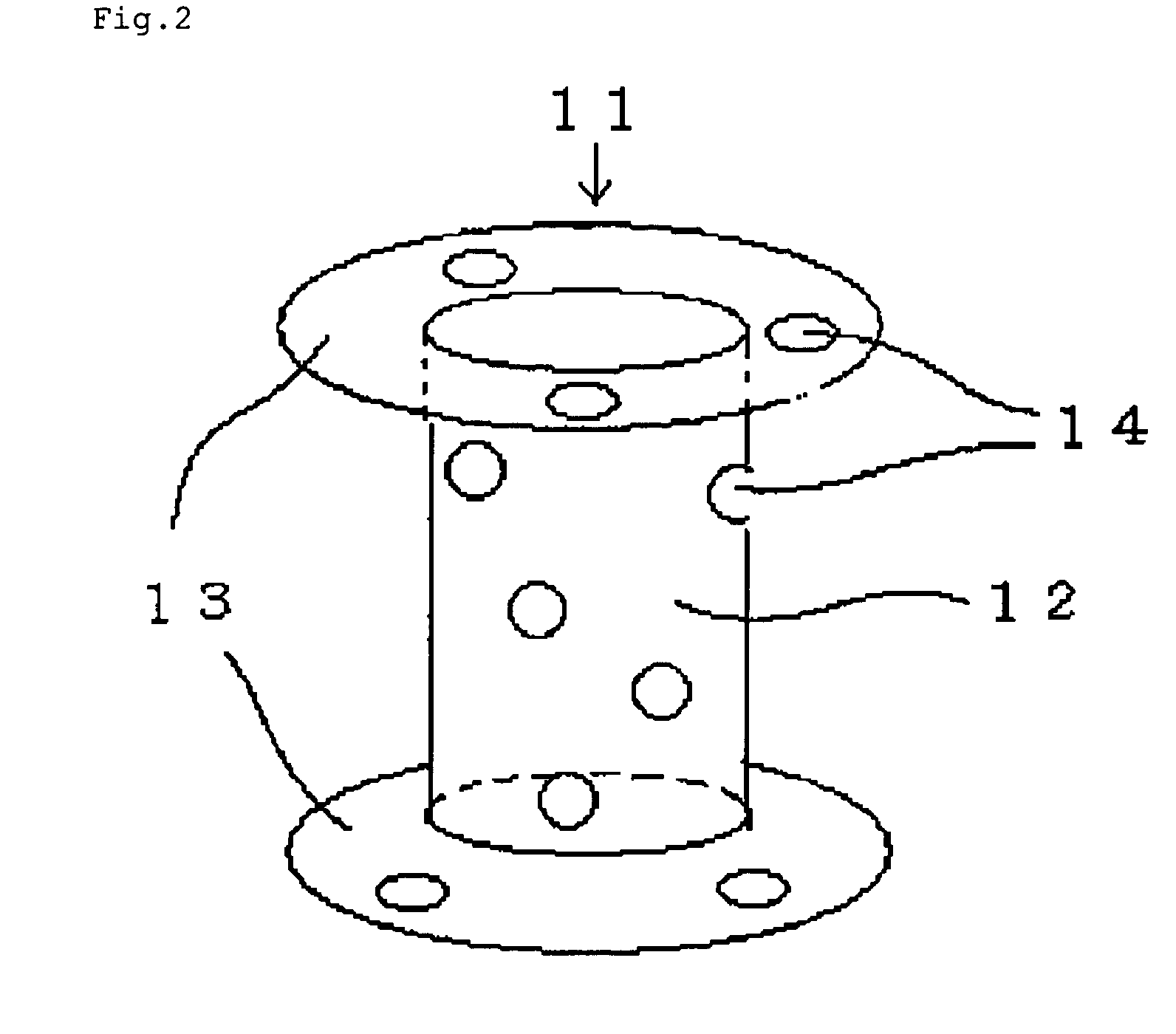Method of producing heat-resistant crimped yarn
a technology of crimping and yarn, which is applied in the field of producing heat-resistant crimping yarn, can solve the problems of not continuing to burn, poor elasticity of clothes, unsuitable for exercise and working activities, etc., and achieves the effects of reducing the quality degradation of constituent fibers, reducing the quality of constituent fibers, and excellent stretch modulus of elasticity
- Summary
- Abstract
- Description
- Claims
- Application Information
AI Technical Summary
Benefits of technology
Problems solved by technology
Method used
Image
Examples
example
[0083]The invention is described concretely with reference to the following Examples.
[0084]Physical properties of samples prepared are measured and evaluated according to methods mentioned below.
[0085]Limited Oxygen Index:
[0086]Measured according to JIS K7201 (1999) that indicates a combustion test for polymer materials based on a limited oxygen index.
[0087]Thermal Decomposition Point:
[0088]Measured according to JIS K7120 (1987) that indicates a method for measuring a thermal weight loss of plastics.
[0089]Elasticity:
[0090]Measured according to JIS L1013 (1999) that indicates a method for testing filament yarn of chemical fibers. According to Test Method, Article 8.11.A, an elongation percentage during stretching of each sample is determined. Preparation before a measurement is described below. A skein of the sample is wrapped up in a gauze, and subjected to treatment with warm water at 90° C., for 20 minutes, and is allowed to air-dry at room temperature.
[0091]Percentage of Elastic ...
examples 1 to 4
, and Comparative Examples 1, 2
[0099]Used was polyparaphenylene-terephthalamide filament yarn (Toray-DuPont's Commercial product named Kevlar®) having a limited oxygen index of 29, a thermal decomposition point of 537° C., a tensile strength of 2.03N / tex, and a tensile modulus of 49.9N / tex. This is composed of 131 monofilaments with a fineness of 0.17 tex per filament whose total fineness is 22.2 tex. The yarn was first twisted to a twist parameter K of 1937 to 9909 by double twister. And a snarl value of this obtained twisted yarn was measured. Next, 200 g of the twisted yarn was wound around an aluminum bobbin, and a yarn cheese was formed. And then the yarn cheese was subjected to heat-set with saturated steam at 200° C. for 15 minutes. And a snarl value of this obtained heat-set yarn was measured. Next, using the same double twister, the yarn was again twisted in the direction opposite to a primary twisting direction to a count of twist zero, whereby a heat-resistant crimped yar...
example 5
[0100]Used was polyparaphenylene-terephthalamide filament yarn (Toray-DuPont's Commercial product) of which fineness is 44.4 tex. The yarn was twisted, heat-set with saturated steam or through dry heat treatment, and untwisted in the same manner as in Example 1, except that the twist parameter during a primary twisting step was 7536. Physical properties of this heat-resistant crimped yarn were measured. Results are shown in Table 1.
PUM
| Property | Measurement | Unit |
|---|---|---|
| Temperature | aaaaa | aaaaa |
| Temperature | aaaaa | aaaaa |
| Pressure | aaaaa | aaaaa |
Abstract
Description
Claims
Application Information
 Login to View More
Login to View More - R&D
- Intellectual Property
- Life Sciences
- Materials
- Tech Scout
- Unparalleled Data Quality
- Higher Quality Content
- 60% Fewer Hallucinations
Browse by: Latest US Patents, China's latest patents, Technical Efficacy Thesaurus, Application Domain, Technology Topic, Popular Technical Reports.
© 2025 PatSnap. All rights reserved.Legal|Privacy policy|Modern Slavery Act Transparency Statement|Sitemap|About US| Contact US: help@patsnap.com



